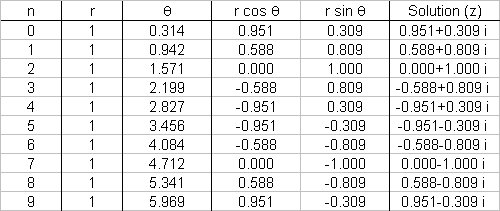Evaluate (-1)^1/10 using De Moivre's theorem?
1 Answer

Explanation:
We seek:
# root(10)(-1) #
Let
First, we will put the complex number,
# omega = cos(pi) + isin(pi) #
We now want to solve the equation
# z^10 = cos(pi) + isin(pi) #
Whenever dealing with complex variable equation such as this it is essential to remember that the complex exponential (and therefore the polar representation) has a period of
# z^10 = cos(pi+2npi) + isin(pi+2npi) \ \ \ n in ZZ #
By De Moivre's Theorem we can write this as:
# z = (cos(pi+2npi) + isin(pi+2npi))^(1/10) #
# \ \ = cos((pi+2npi)/10) + isin((pi+2npi)/10) #
# \ \ = cos(theta) + isin(theta) #
Where:
# theta = (pi+2npi)/10 = ((2n+1)pi)/10#
And we will get

After which the pattern continues (due the above mentioned periodicity).
We can plot these solutions on the Argand Diagram:


